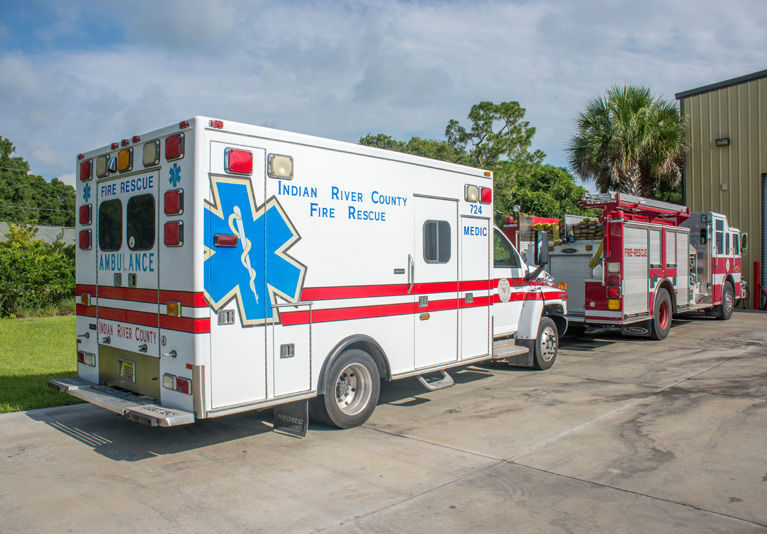
INDIAN RIVER COUNTY — Indian River County’s failure to keep its ambulance fleet up to date finally caught up with it last week when a worn-out, nine-year-old vehicle carrying a child broke down on I-95 en route to a Fort Pierce trauma center.
Fire Chief John King said of the incident, which happened in pouring rain during a busy time on the interstate, just after 4 p.m. on Friday, “The patient was a stable, lower-priority patient and was placed into a second ambulance approximately 16 minutes later, and they continued the transport to Lawnwood,” but it’s unclear why a stable, low-priority patient would be ferried to Lawnwood’s trauma center in an ambulance.
Fire-rescue personnel reportedly were later able to get the limping ambulance running well enough to drive it back to the fleet maintenance facility for service.
Fire-rescue workers at station 7, where the failed ambulance came from, are routinely summoned to make runs out to Interstate 95 and even the Florida Turnpike to rescue victims of vehicle crashes.
For that reason, the station has a new ambulance that could have been used on Friday to transport the child trauma victim, but the new vehicle had been sent to a regional service center “for a minor warranty repair related to the vehicle charging system. So, a reserve ambulance was placed into service at Station 7,” King said.
Similar failures have occurred numerous times in recent months, with other breakdowns on the way to emergency rooms and a pick-up truck being pressed into service to perform triage at one point last fall, while new ambulances were on backorder from Ford.
In just the past two weeks, the county reportedly has had at least three ambulances that had to be temporarily taken out of service due to mechanical issues.
The good news is the county is finally taking steps to update its ambulance fleet. County Commissioners in late June approved funds to buy two new ambulances at $291,000 each.
Three new ambulances ordered last year were being equipped with decals last week in Sanford and are scheduled to be put into service next week. When those units are on the road, county officials say the average age of the ambulance fleet will then be five years, figuring in the five brand-new units.
Commissioner Tim Zorc said he has some questions about the incident on Friday, including why managers did not wait a couple of weeks for an infusion of three new ambulances into the fleet to send back a vehicle for warranty service, if the service needed was in fact minor and not mechanically critical.
Though the county bills patients and their insurance companies more than $5 million annually for ambulance transport and treatment, for several years there was no money in the budget to replace aging, unreliable vehicles, despite concerns repeatedly raised by paramedics and drivers who had to deal with the frequent breakdowns. A mechanic was hired last fall to help handle the mounting load of repair jobs at the fire-rescue’s fleet maintenance shop.
The new batches of ambulances recently ordered by the county replace much older units, some of them more than a decade old and topping 200,000 miles.
“Basically what it is, we’re just getting caught up from the deferred maintenance of the great recession,” said Commissioner Wesley Davis, offering an excuse for why the county let its ambulance fleet get so old and worn out, putting patient lives at risk. “We had planned to replace and renew those assets in the Emergency Services District, but we put a lot of that on hold when the wheels came off the American economy.”
The two ambulances that were just approved for purchase in June could take up to 11 months to build, once the order is placed.



